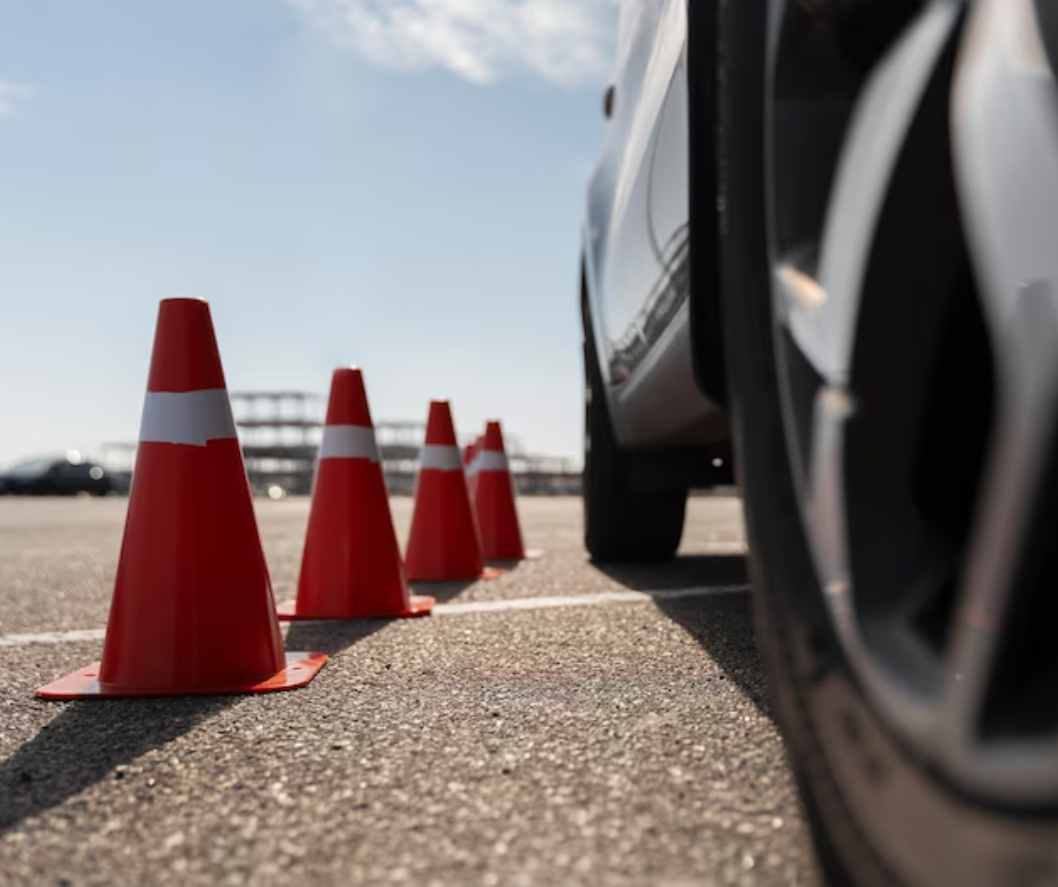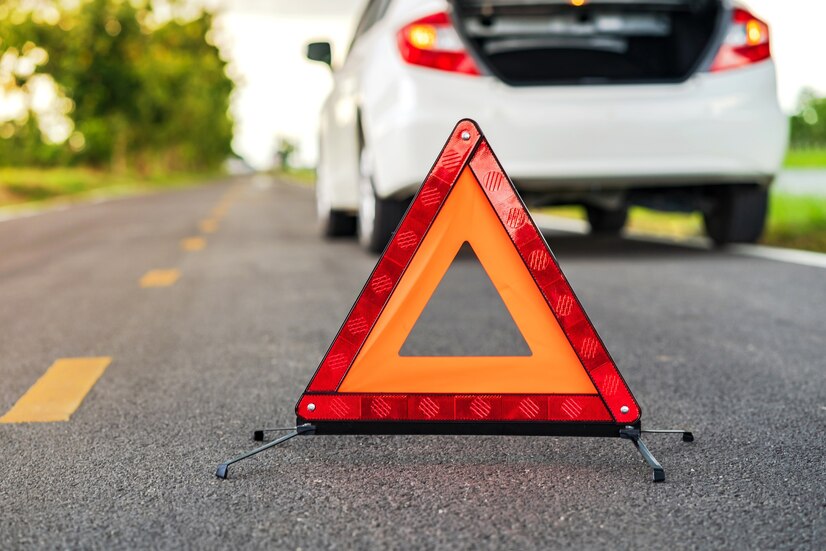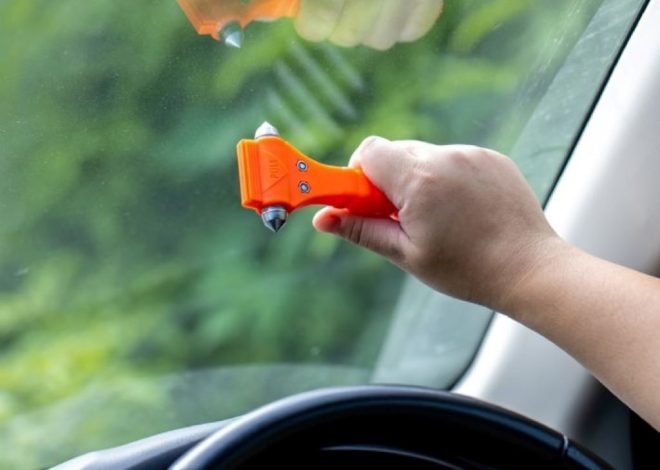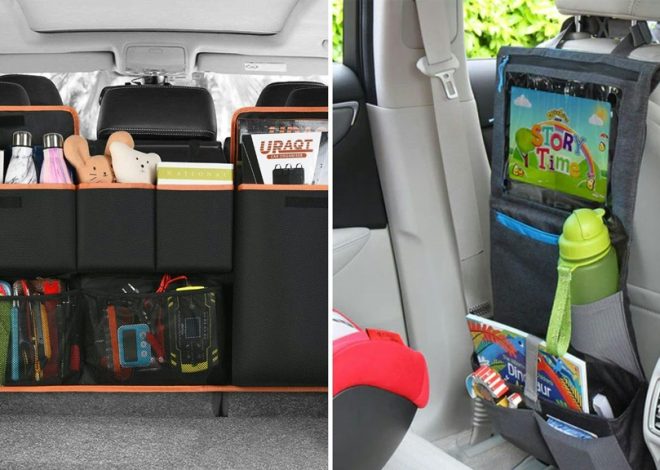
Safety First: Top Tips for Ensuring Vehicle Safety on the Road
When it comes to driving, safety should always be your top priority. The road can be challenging, with various factors that can lead to accidents and mishaps. In this article, we’ll delve into essential tips to help you ensure your and your vehicle’s safety while on the road. From regular vehicle maintenance to safe driving practices and dealing with emergencies, we’ll cover it all. So, buckle up and let’s dive in!
The Importance of Vehicle Safety
Before we delve into the specifics of vehicle safety, let’s take a moment to understand why it’s so crucial. The roads can be unpredictable, and accidents can happen in the blink of an eye. Ensuring your vehicle is in optimal condition and practicing safe driving techniques significantly reduce the risk of accidents.
Statistics on Road Accidents
To emphasize the importance of vehicle safety, let’s take a look at some eye-opening statistics. According to recent data, road accidents are a leading cause of injury and death worldwide. These accidents often result from factors such as speeding, distracted driving, and poor vehicle maintenance.
Regular Vehicle Maintenance
Maintaining your vehicle in good condition is the foundation of road safety. Regular maintenance not only enhances the performance of your vehicle but also minimizes the risk of unexpected breakdowns.
Checking and Changing Engine Oil
Engine oil is the lifeblood of your vehicle. Regularly checking and changing the engine oil ensures that your engine operates smoothly and efficiently. Neglecting this basic maintenance task can lead to engine damage and decreased fuel efficiency.
Monitoring Tire Pressure and Tread
Your tires are your vehicle’s point of contact with the road. Proper tire maintenance involves monitoring tire pressure and tread depth. Underinflated tires can affect handling and fuel economy, while worn-out tread reduces traction, especially in wet conditions.
Inspecting Brake System
Your vehicle’s brakes are its most important safety feature. Regularly inspecting the brake system, including brake pads, rotors, and brake fluid, ensures that you can stop effectively when needed. Don’t ignore any signs of brake issues, such as squeaking or reduced responsiveness.
Replacing Worn-out Windshield Wipers
Clear visibility is crucial for safe driving. Worn-out windshield wipers can hinder your vision during rainy or snowy weather. Replace them as soon as you notice streaks or reduced effectiveness.
Keeping Lights and Signals Functional
Lights and signals are essential for communication on the road. Regularly check and ensure that all lights, including headlights, taillights, turn signals, and brake lights, are functioning properly. This ensures that you’re visible to other drivers, especially during low-light conditions.
Ensuring Proper Visibility
Clear visibility is paramount for safe driving. Let’s explore how you can ensure optimal visibility while on the road.
Importance of Clear Visibility
Clear visibility is not just about seeing the road ahead; it’s also about being seen by other drivers. Proper visibility reduces the risk of collisions and gives you more time to react to unexpected situations.
Cleaning Windows and Mirrors
Regularly clean your vehicle’s windows and mirrors to remove dirt, dust, and grime. Dirty windows can impair your vision, especially when the sun is low on the horizon. Keep a microfiber cloth handy to wipe away any obstructions.
Defrosting and Demisting Techniques
During colder months, frost and condensation can obscure your windows. Use the defrost and demist functions of your vehicle’s climate control system to clear them quickly. It’s a small step that can make a big difference in your visibility.
Headlight Maintenance and Alignment
Properly maintained headlights are essential for nighttime visibility and signaling to other drivers. Check the alignment of your headlights to ensure they’re aimed correctly and illuminate the road ahead without blinding oncoming drivers.
Avoiding Glare from Oncoming Vehicles
Glare from oncoming headlights can be both annoying and dangerous. To minimize the impact of glare, focus your gaze on the right edge of the road and use your peripheral vision to stay oriented.
Safe Driving Practices
While maintaining your vehicle is crucial, practicing safe driving techniques is equally important. Let’s explore some strategies for safe driving.
Defensive Driving Techniques
Defensive driving involves anticipating potential hazards and being prepared to react. Follow these defensive driving tips to stay safe on the road:
- Maintain a safe following distance from the vehicle ahead.
- Scan your surroundings and be aware of other drivers’ behavior.
- Anticipate the actions of pedestrians and cyclists.
- Avoid sudden lane changes or aggressive maneuvers.
Adapting to Different Weather Conditions
Weather conditions can vary significantly, affecting road traction and visibility. When driving in adverse weather, such as rain, snow, or fog, adjust your driving speed and maintain a greater distance from other vehicles.
Avoiding Distractions While Driving
Distracted driving is a major contributor to accidents. Keep your focus on the road by avoiding activities such as texting, talking on the phone, or fiddling with the radio while driving.
Proper Use of Seatbelts and Child Safety Seats
Seatbelts are your first line of defense in the event of a collision. Always wear your seatbelt and ensure that all passengers, including children, are properly restrained. Use appropriate child safety seats based on age and size.
Understanding Road Signs and Signals
Road signs and signals provide essential information for safe navigation. Familiarize yourself with different types of road signs, including regulatory signs that indicate speed limits and warning signs that alert you to potential hazards.
Importance of Road Signs and Signals
Road signs and signals are like a language that communicates important information to drivers. They provide guidance, warnings, and instructions that help you navigate the road safely and efficiently.
Different Categories of Road Signs
Road signs can be categorized into different groups, each serving a specific purpose:
- Regulatory signs: These signs convey laws and regulations, such as speed limits and parking restrictions.
- Warning signs: These signs alert drivers to potential hazards ahead, such as sharp turns or pedestrian crossings.
- Informational signs: These signs provide helpful information, such as directions to nearby facilities or services.
Understanding Traffic Signals
Traffic signals play a vital role in controlling the flow of traffic and preventing collisions. Be sure to obey traffic signals, including red, green, and yellow, to avoid accidents at intersections.
Following Regulatory Signs
Regulatory signs indicate rules that drivers must follow. These signs include speed limit, stop, yield, and no-entry signs. Adhering to these signs ensures orderly and safe traffic flow.
Interpreting Warning Signs
Warning signs are designed to alert you to potential dangers on the road. These signs are often triangular, with a yellow background and black symbols or text. Pay close attention to these signs and adjust your driving accordingly.
Managing Speed and Acceleration
Speed plays a significant role in road safety. Let’s explore the importance of maintaining an appropriate speed and making smooth acceleration maneuvers.
Significance of Appropriate Speed
Speeding is a leading cause of accidents. Driving at an appropriate speed allows you to control your vehicle better, react to unexpected events, and avoid collisions.
Adhering to Speed Limits
Speed limits are set based on the road’s characteristics and surrounding conditions. Adhering to speed limits keeps you safe and helps prevent fines and penalties.
Adjusting Speed Based on Road Conditions
Road conditions can vary widely. Adjust your speed according to wet roads, sharp curves, and low visibility due to fog or rain.
Smooth Acceleration Techniques
Abrupt acceleration can lead to loss of control and skidding. Use smooth and gradual acceleration to maintain stability and traction, especially on slippery surfaces.
Avoiding Sudden Braking
Sudden braking can cause your vehicle to skid or rear-end the vehicle in front of you. Brake gradually and smoothly, allowing sufficient distance between you and the vehicle ahead.
Navigating Intersections
Intersections are critical points on the road where multiple paths intersect. Safely navigating intersections involves understanding right-of-way rules and following safe turning techniques.
Approaching Different Types of Intersections
Intersections come in various configurations, including four-way stops, T-intersections, and roundabouts. Approach each type of intersection with caution and follow the appropriate right-of-way rules.
Right-of-Way Rules at Intersections
Right-of-way rules determine which vehicle has the legal right to proceed first at an intersection. Yield the right-of-way when required to prevent accidents and promote smooth traffic flow.
Dealing with Uncontrolled Intersections
Uncontrolled intersections lack traffic signals or stop signs. In such cases, the vehicle that arrives first generally has the right of way. Exercise caution and yield if necessary.
Making Safe Left and Right Turns
Turning requires careful observation and consideration of other vehicles and pedestrians. Signal your intention to turn, check for oncoming traffic, and yield to pedestrians before turning.
Being Cautious at Roundabouts
Roundabouts are designed to improve traffic flow and reduce collisions. When entering a roundabout, yield to vehicles already in the roundabout and follow the designated lanes.
Handling Emergency Situations
Despite our best efforts, emergencies can still occur while driving. Knowing how to respond in such situations can make a significant difference.
Dealing with Tire Blowouts
A tire blowout can be frightening, but knowing how to react can help you maintain control. Hold the steering wheel firmly, lift the accelerator, and gradually steer to a safe location.
Reacting to Brake Failures
Brake failures are rare but serious emergencies. If your brakes fail, downshift to lower gears to slow down, engage the emergency brake, and use engine braking to reduce speed.
Addressing Engine Overheating
An overheated engine can lead to breakdowns and damage. If your engine overheats, turn off the air conditioning, turn on the heater, and pull over to a safe location.
Steps to Take in Case of an Accident
Accidents can be stressful, but staying calm and taking the right steps can help minimize further damage and ensure your safety:
- Check for injuries and call for medical help if needed.
- Move your vehicle to a safe location if possible.
- Exchange information with the other driver(s) involved.
- Document the accident with photos and notes.
- Contact law enforcement and your insurance company.
Providing First Aid and Calling for Help
If you encounter an accident, providing first aid to injured individuals and calling for help are crucial. Keep a basic first aid kit in your vehicle and know how to use it effectively.
Proper Use of Mirrors
Mirrors are essential tools for maintaining situational awareness while driving. Use your rearview mirror and side mirrors to monitor traffic around your vehicle.
Importance of Mirrors in Safe Driving
Mirrors are your eyes on the road behind you. Properly adjusted mirrors provide a clear view of your vehicle’s surrounding areas, reducing blind spots.
Adjusting Rearview and Side Mirrors
Proper mirror adjustment involves eliminating blind spots and maximizing your field of vision. Adjust your rearview mirror to frame the entire rear window, and angle your side mirrors outward to minimize blind spots.
Blind Spot Checking Techniques
Blind spots are areas around your vehicle that aren’t visible in your mirrors. Before changing lanes or turning, perform a quick head check to ensure no vehicles are in your blind spots.
Utilizing Mirrors for Parking
Mirrors are valuable tools when parking your vehicle. Use your side mirrors and rearview mirror to gauge the distance between your vehicle and obstacles while parallel parking or backing into a spot.
Monitoring Traffic Behind the Vehicle
Regularly checking your mirrors while driving helps you stay informed about vehicles approaching from behind. This information is crucial for making safe lane changes and turns.
Night Driving Tips
Driving at night presents its own set of challenges. Follow these tips to ensure a safe and enjoyable night’s journey.
Challenges of Driving at Night
Reduced visibility and the glare of oncoming headlights are common challenges when driving at night. Be prepared for these conditions and adjust your driving accordingly.
Ensuring Adequate Vehicle Lighting
Your vehicle’s lighting plays a vital role in nighttime visibility. Make sure all your lights, including headlights, taillights, and turn signals, are in good working condition.
Reducing Glare from Oncoming Headlights
The glare from oncoming headlights can be uncomfortable and distracting. Look to the right side of the road and use your peripheral vision to navigate while minimizing direct glare.
Staying Alert and Focused
Fatigue can set in more easily during nighttime driving. Stay alert by taking breaks, staying hydrated, and conversing with passengers to keep your mind active.
Avoiding Fatigue during Night Journeys
Long journeys at night can lead to fatigue. Combat fatigue by getting adequate rest before your trip, taking regular breaks, and sharing driving responsibilities with another licensed driver.
Defensive Driving Strategies
Defensive driving is a mindset that prioritizes safety and anticipates potential hazards. Here are some advanced defensive driving strategies to enhance your safety on the road.
Maintaining a 360-degree Awareness
Stay aware of your surroundings by regularly scanning your environment. This includes checking your mirrors, monitoring traffic ahead and behind you, and being mindful of pedestrians and cyclists.
Predicting Other Drivers’ Behavior
Observing the behavior of other drivers can give you insights into their intentions. To anticipate their actions, look for subtle cues such as brake lights, turn signals, and lane positioning.
Anticipating Potential Hazards
The road can be full of surprises. Stay vigilant and anticipate potential hazards, such as sudden stops or pedestrians crossing the street unexpectedly.
Having an Escape Route in Mind
Always have an escape route in mind if you need to make a quick maneuver to avoid a collision. Maintain a safe following distance to provide yourself with enough time to react.
Avoiding Aggressive Drivers
Encountering aggressive drivers can be intimidating. Stay calm and avoid engaging with them. If necessary, change lanes to create distance and avoid potential conflicts.
Proper Parking Techniques
Parking safely is an essential skill that contributes to overall road safety. Here’s how to park your vehicle correctly in various situations.
Choosing Safe and Legal Parking Spots
When parking, choose spots that are well-lit, legally designated, and away from busy traffic areas. Avoid obstructing driveways, fire hydrants, and handicap spaces.
Parallel Parking Step-by-Step
Parallel parking can be challenging, but with practice, it becomes easier. Follow these steps for a successful parallel parking maneuver:
- Signal your intention to park and line up your vehicle with the parked car ahead.
- Begin reversing while turning your steering wheel fully to the right.
- Once your vehicle is at a 45-degree angle, straighten the steering wheel.
- Continue reversing until your vehicle is parallel to the curb.
- Straighten your wheels and adjust your position if necessary.
Angle Parking Tips
Angle parking is a common parking technique in parking lots. Here’s how to angle park effectively:
- Signal your intention to park and approach the parking space at a shallow angle.
- Align your vehicle parallel to the parking lines.
- Leave sufficient space between your vehicle and adjacent vehicles.
Parking on Hills Safely
Parking on hills requires extra caution to prevent your vehicle from rolling. Use your parking brake and turn your wheels appropriately to prevent your vehicle from moving.
Utilizing Parking Aids and Cameras
Modern vehicles often come equipped with parking aids and cameras that assist in parking. Use these features to your advantage, especially when parking in tight spaces.
Maintaining a Safe Following Distance
Maintaining a safe following distance is crucial for preventing rear-end collisions and giving you ample time to react to sudden stops.
Understanding the Two-Second Rule
The two-second rule helps you maintain a safe following distance. Choose a stationary object on the road, and when the vehicle ahead passes it, count “one-thousand-one, one-thousand-two.” If you reach the object before finishing the count, you’re following too closely.
Adapting Following Distance to Conditions
Increase your following distance to at least four seconds in adverse weather or low visibility. This gives you more time to react to unexpected events.
Effects of Tailgating
Tailgating, or following too closely, reduces your reaction time and increases the risk of rear-end collisions. Keep a safe distance to give yourself room to brake if needed.
Preventing Rear-End Collisions
Rear-end collisions are common but avoidable. Maintain a safe following distance, pay attention to brake lights ahead, and brake gently to avoid abrupt stops.
Safe Following Distance on Highways
On highways, higher speeds require greater following distances. Use the three-second rule to maintain a safe distance and increase it in adverse conditions.
Avoiding Drowsy Driving
Drowsy driving can be as dangerous as driving under the influence. Here’s how to prevent fatigue from affecting your driving.
Recognizing Signs of Drowsiness
Yawning, heavy eyelids, and difficulty keeping your head up are signs of drowsiness. If you experience these symptoms, pull over to a safe area and rest.
Importance of Sufficient Rest
Getting adequate sleep is essential for staying alert on the road. Aim for 7-9 hours of sleep before embarking on a long journey.
Planning Long Journeys with Breaks
Plan regular breaks to stretch, hydrate, and rest when embarking on long journeys. Breaks help combat fatigue and keep you refreshed.
Sharing Driving Responsibilities
If you’re driving with a companion, take turns behind the wheel. Sharing driving responsibilities prevents fatigue and allows both drivers to stay alert.
Pulling Over When Feeling Fatigued
If you feel drowsy while driving, don’t hesitate to pull over at a rest area or gas station. A short nap can rejuvenate you and improve your focus.
Weather-Related Safety Measures
Weather conditions can dramatically affect road safety. Here’s how to navigate various weather-related challenges.
Preparing for Rainy Conditions
Rainy conditions can reduce visibility and create slippery roads. Slow down, increase your following distance, and use your headlights.
Driving in Snow and Ice
Driving on snow and ice requires extra caution. Use winter tires, drive at lower speeds, and brake gently to avoid skidding.
Navigating Fog Safely
Fog can significantly reduce visibility. Use your low-beam headlights, reduce your speed, and keep a safe distance from the vehicle ahead.
Windy Weather Driving Precautions
Strong winds can affect your vehicle’s stability, especially high-profile vehicles like trucks and SUVs. Hold the steering wheel firmly and reduce your speed.
Adjusting to Wet and Slippery Roads
Wet roads can be hazardous due to reduced traction. Drive slower, avoid sudden maneuvers, and maintain a safe following distance.
Importance of Seatbelt Usage
Seatbelts are your most crucial safety feature in the event of a collision. Make sure you and all passengers are buckled up properly.
Life-Saving Benefits of Seatbelts
Seatbelts significantly reduce the risk of injury or death in a collision. Always wear your seatbelt and ensure that others in the vehicle do the same.
Ensuring Proper Seatbelt Fit
Proper seatbelt fit is essential for optimal protection. The lap belt should sit low and snug across your hips, while the shoulder belt should cross your chest and collarbone.
Seatbelt Safety for Children and Infants
Children and infants require specialized safety seats. Follow the manufacturer’s instructions to ensure proper installation and fit for your child’s age and size.
Lap and Shoulder Belt Usage
Using both the lap and shoulder belt provides the highest level of protection. Avoid tucking the shoulder belt under your arm or behind your back.
Setting a Seatbelt Example for Passengers
As the driver set a positive example by always wearing your seatbelt. Encourage your passengers to buckle up as well, especially children.
Avoiding Distracted Driving
Distracted driving diverts your attention from the road, increasing the risk of accidents. Stay focused and avoid these common distractions.
Understanding Different Types of Distractions
Distractions can be visual, manual, or cognitive. Visual distractions take your eyes off the road, manual distractions involve taking your hands off the wheel, and cognitive distractions divert your mental focus.
Importance of Staying Focused
Staying focused on driving is crucial for your safety and the safety of others. Avoid multitasking activities that take your attention away from the road.
Using Hands-Free Devices Properly
If you need to make a call while driving, use hands-free devices. However, even hands-free conversations can be distracting, so keep them brief and simple.
Not Texting or Using Phone While Driving
Texting while driving is dangerous and illegal in many places. Put your phone away or use a designated app to prevent distractions.
Minimizing In-Car Distractions
In-car distractions can be just as dangerous as external distractions. Set up your navigation, adjust your music, and make other adjustments before you start driving.
Vehicle Safety Features
Modern vehicles have advanced safety technologies that can enhance your driving experience. Let’s explore some of these features.
Exploring Modern Safety Technologies
Modern vehicles are equipped with cutting-edge safety technologies that assist drivers and prevent accidents. These technologies include:
- Anti-lock Braking System (ABS): Prevents wheel lockup during hard braking, allowing you to steer while braking.
- Electronic Brakeforce Distribution (EBD): Distributes braking force to individual wheels for optimal stopping.
- Electronic Stability Control (ESC): Helps maintain vehicle stability during turns and slippery conditions.
- Adaptive Cruise Control: Adjusts your speed to maintain a safe following distance from the vehicle ahead.
- Collision Avoidance Systems: Alerts you to potential collisions and, in some cases, applies the brakes to prevent them.
- Lane Departure Warning: Alerts you if your vehicle drifts out of its lane without signaling.
- Blind Spot Detection: Alerts you if a vehicle is in your blind spot when changing lanes.
Sharing the Road with Others
Interacting safely with other road users is essential for a harmonious and safe driving experience.
Interacting with Pedestrians and Cyclists
Pedestrians and cyclists are vulnerable road users. Be cautious when approaching crosswalks and intersections and yield the right-of-way as needed.
Being Cautious around Commercial Vehicles
Large commercial vehicles have different turning radii and longer stopping distances. Avoid lingering in their blind spots and give them plenty of space.
Motorcyclist and Bicyclist Safety
Motorcyclists and bicyclists are less protected than drivers of enclosed vehicles. Always be vigilant and give them extra space when passing.
Communicating with Other Drivers
Effective communication with other drivers helps prevent misunderstandings and promotes safe driving behavior.
Practicing Patience and Respect
Road rage and aggressive behavior can lead to accidents. Stay patient, yield when appropriate, and avoid aggressive gestures or actions.
Emergency Kit Essentials
Carrying an emergency kit can be a lifesaver in unexpected situations. Here’s what your kit should include:
- First aid supplies: Bandages, antiseptic wipes, adhesive tape, and basic medications.
- Emergency contact information: List of emergency numbers and contacts.
- Flashlight and batteries: Useful in case of nighttime breakdowns.
- Multi-tool or Swiss Army knife: Handy for various tasks.
- Blanket or warm clothing: To stay warm in case you’re stranded.
- Water and non-perishable snacks: To stay hydrated and nourished.
- Jumper cables: For jump-starting your vehicle or helping others.
- Roadside flares or reflective triangles: To make your vehicle more visible in emergencies.
Driving in Construction Zones
Construction zones require extra caution and attention. Follow these guidelines to navigate construction areas safely.
Adhering to Reduced Speed Limits
Construction zones often have reduced speed limits to protect workers and drivers. Obey these speed limits to prevent accidents.
Paying Attention to Signage
Follow signs and instructions in construction zones carefully. Signs provide valuable information about lane closures, detours, and hazards.
Being Prepared for Lane Changes
Construction zones may involve lane closures or shifts. Be prepared for sudden lane changes and merge safely.
Navigating Uneven Road Surfaces
Uneven road surfaces are common in construction zones. Slow down and maintain a firm grip on the steering wheel to ensure stability.
Keeping Workers and Drivers Safe
Construction workers are at risk in construction zones. Follow signs and instructions to ensure the safety of both workers and drivers.
Properly Loading Your Vehicle
Properly loading your vehicle prevents imbalanced weight distribution, which can affect handling and stability.
Distributing Weight for Balance
Place heavy items low and towards your vehicle’s center to maintain balance. Avoid overloading one side of the vehicle.
Securing Cargo to Prevent Shifting
Unsecured cargo can shift during driving, affecting stability. Use cargo nets, tie-downs, or other methods to secure items in place.
Avoiding Overloading the Vehicle
Exceeding your vehicle’s weight limits can affect its performance and safety. Check your vehicle’s owner’s manual for recommended weight limits.
Understanding Roof Rack Safety
If your vehicle has a roof rack, use it carefully. Avoid overloading the roof, and secure items tightly to prevent them from shifting or falling.
Impact of Improper Loading on Handling
Improperly loaded vehicles can become unstable during turns or sudden maneuvers. Ensure that your vehicle is loaded evenly and within its weight limits.
Avoiding Road Rage
Road rage can escalate quickly and lead to dangerous situations. Stay calm, avoid aggressive behavior, and focus on arriving safely at your destination.
Recognizing Signs of Road Rage
Aggressive driving behaviors, such as tailgating, yelling, and aggressive gestures, are signs of road rage. Avoid engaging with aggressive drivers.
Managing Anger and Frustration
Traffic and delays can be frustrating, but responding with anger won’t improve the situation. Take deep breaths and remind yourself to stay calm.
Staying Calm in Stressful Situations
Staying calm is essential, especially in stressful situations. Avoid confrontations, focus on your driving, and let go of minor irritations.
Giving Other Drivers the Benefit of the Doubt
Assume that other drivers may have reasons for their behavior. Avoid taking their actions personally and maintain your composure.
Reporting Aggressive Behavior When Necessary
If you encounter extremely aggressive behavior, report it to the appropriate authorities when it is safe. Provide details about the vehicle and the incident.
Safety Checks Before Long Trips
Conduct thorough safety checks before embarking on a long trip to ensure your vehicle is in optimal condition.
Inspecting Vehicle Fluids and Levels
Check your vehicle’s oil, coolant, brake fluid, and other essential fluids. Top them up as needed to prevent breakdowns.
Testing Brakes and Lights
Test your brakes, headlights, taillights, turn signals, and hazard lights to ensure they function properly.
Checking Tire Condition and Pressure
Inspect your tires for signs of wear, such as uneven tread or bulges. Check the tire pressure and adjust it according to the manufacturer’s recommendations.
Verifying All Safety Equipment
Ensure all safety equipment, such as airbags, seatbelts, and child safety seats, is properly working.
Mapping Out Rest Stops and Breaks
Plan rest stops and breaks along your route to prevent fatigue. Use these breaks to stretch, hydrate, and refresh.
Understanding Right-of-Way
Understanding and respecting right-of-way rules is essential for preventing accidents and promoting safe traffic flow.
Following Right-of-Way Rules
Right-of-way rules dictate who has the legal right to proceed first in different situations. Yield to vehicles or pedestrians with the right of way to prevent collisions.
Yielding Appropriately at Intersections
Yielding at intersections prevents conflicts and ensures smooth traffic flow. Always yield to vehicles and pedestrians with the right of way.
Pedestrian Right-of-Way
Pedestrians have the right of way at crosswalks and intersections. Yield to pedestrians and give them enough time to cross safely.
Handling Four-Way Stops
At four-way stops, the first vehicle typically has the right of way. If two vehicles arrive simultaneously, the one on the right has the right of way.
Dealing with Uncontrolled Intersections
Uncontrolled intersections lack traffic signals or signs. Yield to vehicles that arrive first and proceed cautiously to avoid accidents.
Minimizing Distractions from Passengers
Passengers can be sources of distraction. Set ground rules for behavior in the vehicle to maintain focus on the road.
Setting Ground Rules for Passengers
Discuss expectations with your passengers before driving. Establish rules that encourage a calm and distraction-free environment.
Avoiding Deep Conversations
Engaging in deep or emotional conversations while driving can divert your attention from the road. Save these discussions for when you’re parked.
Limiting Excitement and Noise
Excessive excitement and noise in the vehicle can be distracting. Encourage passengers to keep noise levels reasonable to maintain your focus.
Ensuring Children Are Securely Restrained
Children must be properly restrained to ensure their safety. Ensure that child safety seats are securely installed and seatbelts are properly fastened.
Focusing on the Road at All Times
Your primary focus should always be on the road and your surroundings. Minimize interactions with passengers that take your attention away from driving.
Dealing with Skidding
Skidding can occur in slippery conditions. Here’s how to regain control and prevent accidents.
Causes of Skidding
Skidding can be caused by sudden steering inputs, excessive speed, or slippery road conditions. Avoid abrupt maneuvers and adjust your speed to road conditions.
Correcting a Front-Wheel Skid
If your front wheels skid, release the accelerator and steer in the direction you want to go. As traction is regained, gently accelerate.
Managing a Rear-Wheel Skid
In a rear-wheel skid, steer toward the skid to regain control. Avoid sudden movements, and release the accelerator to regain traction.
Avoiding Overcorrection
Overcorrecting can lead to loss of control. Make small, gradual steering adjustments to keep the vehicle stable.
Maintaining Control in Slippery Conditions
Maintaining control on slippery surfaces requires gentle inputs. Drive smoothly, brake gently, and avoid sudden acceleration.
Understanding Traffic Laws
Staying informed about traffic laws is essential for safe and legal driving.
Staying Updated on Traffic Regulations
Traffic regulations can change, so stay informed about new laws and regulations for your region.
Respecting Speed Limits and Signs
Speed limits are designed for your safety. Adhere to posted speed limits and adjust your speed according to road conditions.
Consequences of Traffic Violations
Traffic violations can result in fines, points on your license, increased insurance rates, and even license suspension.
Impact of Traffic Violations on Insurance
Traffic violations can lead to higher insurance premiums. Safe driving and adhering to traffic laws can help keep your rates low.
Being a Law-Abiding Driver
Following traffic laws isn’t just about avoiding penalties—it’s about protecting yourself others, and promoting road safety.
Conclusion
Road safety is a collective responsibility that starts with each driver. By prioritizing safety, following best practices, and continuously improving your driving skills, you contribute to safer roads for everyone. Remember that road safety is an ongoing commitment that requires vigilance and a dedication to learning from your experiences.
So, the next time you hit the road, take these top tips to heart. Keep your vehicle well-maintained, drive defensively, and respect the road rules. By doing so, you’ll keep yourself safe and contribute to a safer driving environment for everyone on the road.






